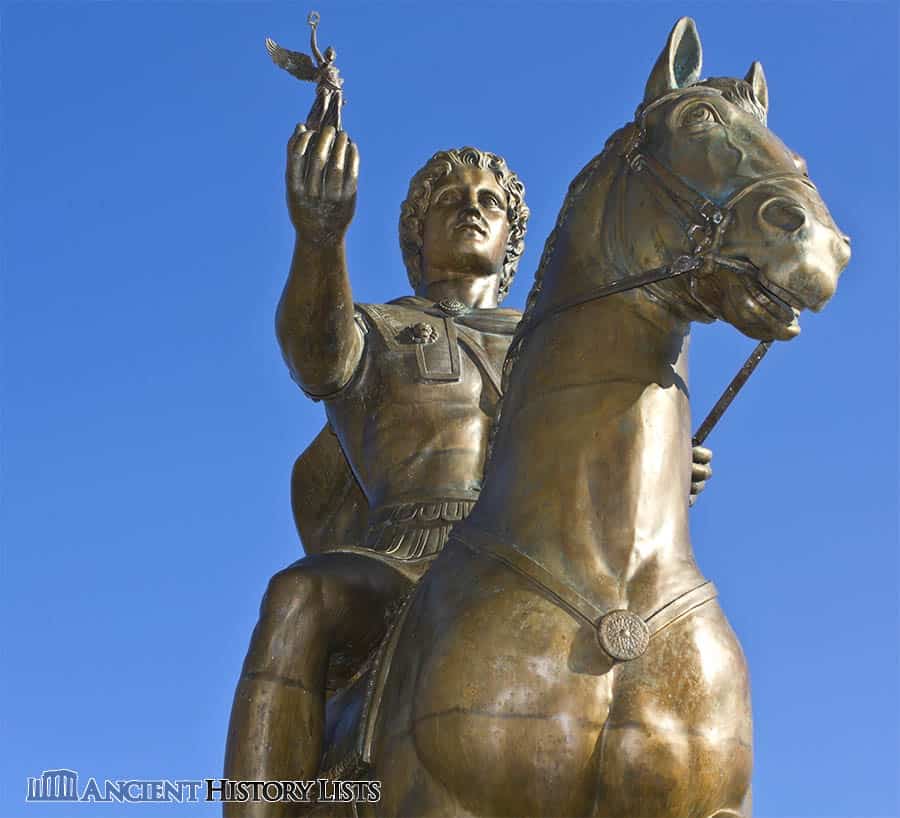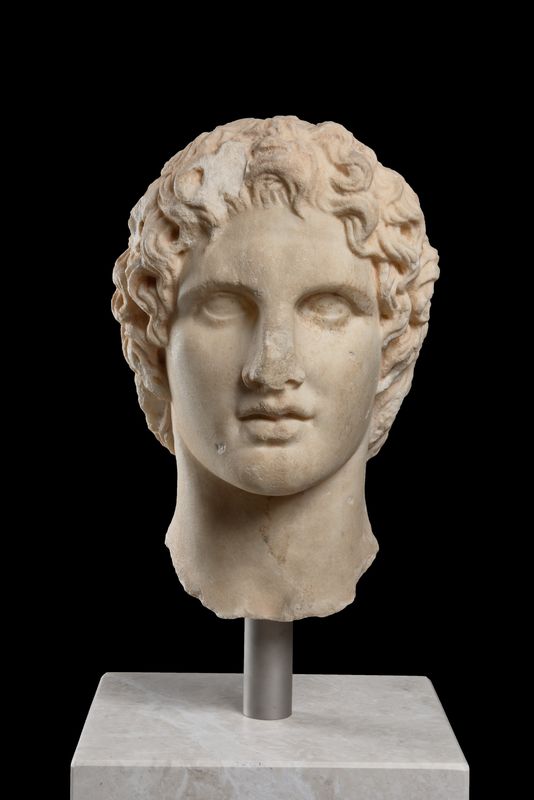
ITALIAN, ROME, LATE 18TH CENTURY ALEXANDER THE GREAT Sculptures, Statues & Figures, bust
The Hellenistic World (from the Greek word Hellas for Greece) is the known world after the conquests of Alexander the Great and corresponds roughly with the Hellenistic Period of ancient Greece, from 323 BCE ( Alexander 's death) to the annexation of Greece by Rome in 146 BCE. Although Rome's rule ended Greek independence and autonomy it did.

Top 12 Greatest Leaders in Ancient Greece Ancient History Lists
The Hellenistic period dates from the death of Alexander the Great in 323 BC to the defeat of Cleopatra VII and Mark Antony at Actium in 31 BC. After his death, Alexander's empire was divided up into kingdoms, ruled by his generals. The major dynasties sponsored major architectural programmes and were great patrons of the arts and culture.

Alexander the great, ARH statues Alexander the great, Statue, Roman sculpture
News By Owen Jarus ( lifes-little-mysteries ) published 25 November 2023 If Alexander the Great had invaded Rome, would he have won? Comments (1) Alexander the Great conquered one of the.

Alexander The Great Alexander the great statue, Alexander the great, Roman sculpture
This week, for the first time since its destruction at the hands of Roman invaders barely 200 years later, the Palace of Aigai, the largest surviving building from the classical Greek era, has.

Alexander the great Alexander the great, Classical antiquity, Statue
Vocabulary. Alexander the Great, also known as Alexander III or Alexander of Macedonia is known as one of the greatest generals in all history. Alexander was born in 356 B.C.E. in Pella, Macedonia, to King Philip II. As a young boy, Alexander was taught to read, write, and play the lyre. He developed a life-long love of reading and music.

AI Renders Realistic Images of Plato & Alexander the Great from their Busts Alexander the
Google Classroom Overview Alexander the Great was famous for his military power and is a legendary figure in history. Much of what we know about Alexander the Great is unreliable and steeped in myth; a lot of these mythologies were used by Alexander's successors.

Alexander the great Alexander the great, Roman busts, Roman sculpture
Alexander the Great - Wikipedia Alexander the Great Alexander III of Macedon ( Ancient Greek: Ἀλέξανδρος, romanized : Alexandros; 20/21 July 356 BC - 10/11 June 323 BC), commonly known as Alexander the Great, [a] was a king of the ancient Greek kingdom of Macedon.

Bust of Alexander
Themes and periods Ancient world people power and status 3D scan Alexander the Great by Fitzwilliam Museum Loading 3D model Other highlight objects you might like
Alexander The Great Statue Head
The Rape of Proserpina. David. Ponte Sant'Angelo. Statues from the Unification of Italy. Altare della Patria. Via Fori Imperiali. The Janiculum Hill. The Spirits of Rome Brought to Life. In the 3000 years of Rome's history, millions of people have walked the Seven Hills of Rome, the streets of the Roman Forum, and the historic centre.

CIRCA 1ST CENTURY A.D. A ROMAN MARBLE PORTRAIT OF ALEXANDER THE GREAT Alexander the great
You've probably heard of Alexander the Great, the king of the ancient Greek kingdom of Macedon in the fourth century B.C. Known for conquering lands as far away as India, and taking steps.

Statue of Alexander the Great David Hooper Flickr
World History Encyclopedia. World History Encyclopedia, 18 May 2013. Web. 08 Jan 2024.

Statue of Alexander the Great. This marble statue of Alexander the Great was found in the area
A Magnificent Sculpture. This magnificent statue of Alexander the Great depicts him on horseback, exuding strength and determination. It is made of bronze, standing at an impressive height of around 6 meters (20 feet). The level of detail in the sculpture is truly mesmerizing, capturing the essence of Alexander's charismatic personality.

Alexander the Great from the British Museum Alexandre Le Grand, Alexander The Great, Ancient
Physical Descriptions Medium Leaded bronze on stone base Technique

Head of a statue of Alexander the Great Acropolis Museum Official website
RM2B01DNH - Greece/Rome: Portrait of Aristotle (384-322 BCE) in pentelic marble, copy from the Imperial Period (1st or 2nd century CE) of a lost bronze sculpture made by Lysippos of Sicyon (c. 390-300 BCE). Photo by Eric Gaba/Sting (CC BY-SA 2.5 License). Aristotle (Greek: Ἀριστοτέλης, Aristotélēs) was a Greek philosopher, a student of Plato and teacher of Alexander the Great.

Head of Alexander the Great. Bronze. Greek or Roman. Late Hellenistic to Hadrianic, ca. 150 BC
Greece has reopened the "Parthenon of Macedonia" otherwise known as the Palace of Aigai, where Alexander the Great was crowned king. This place where history was made brought thousands of visitors to "flock" to the "largest surviving classical Greek building," in early January. "The importance of such monuments transcends local boundaries, becoming property of all humanity.

Portrait of Alexander the Great 3rd century B.C. Alexander the great, Portrait sculpture
Base: 1 3/8 × 16 15/16 × 8 7/8 in. (3.5 × 43 × 22.5 cm) Classification: Bronzes Credit Line: Museo Archeologico Nazionale, Naples Learn more about this artwork Travel Back in Time: Pergamon and the Hellenistic Kingdoms of the Ancient World